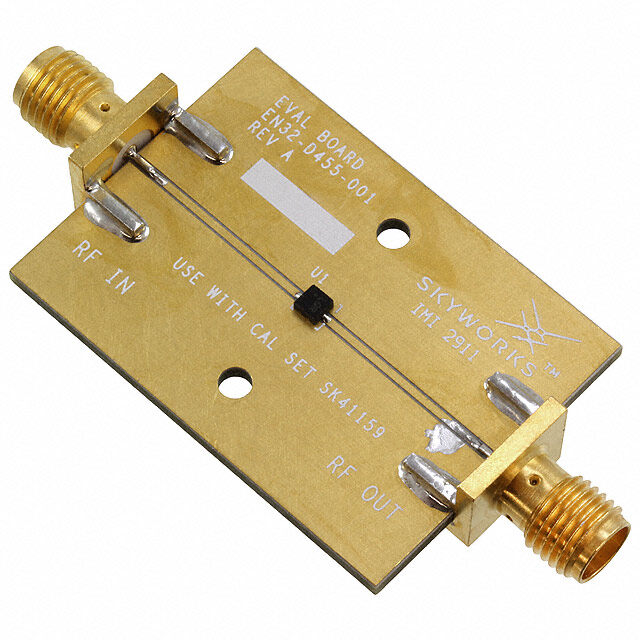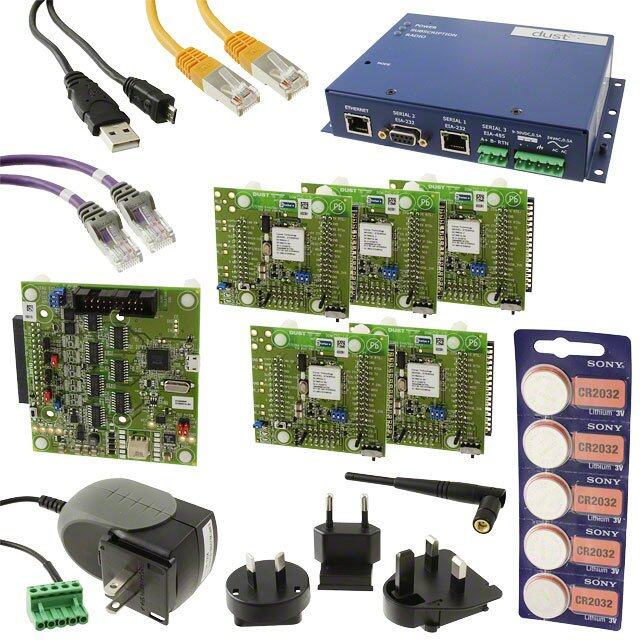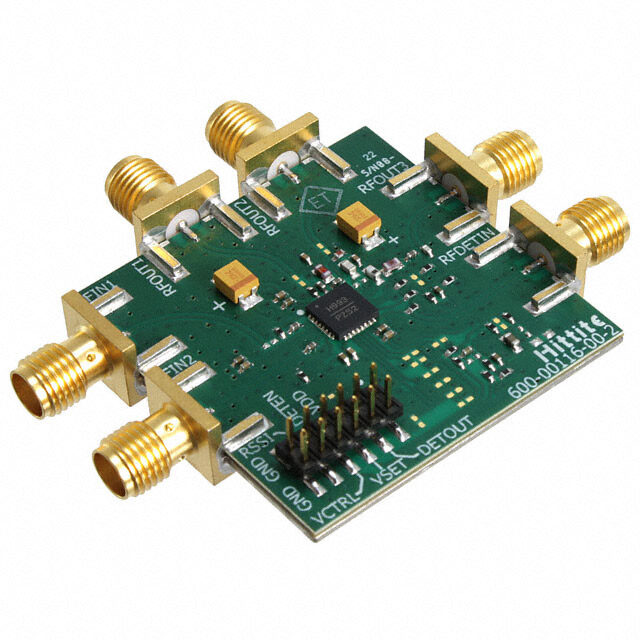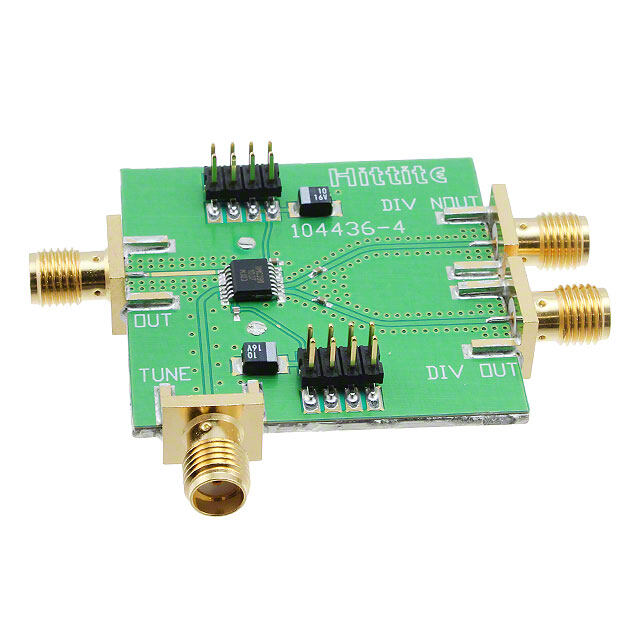ICGOO在线商城 > 射频/IF 和 RFID > RF 评估和开发套件,板 > DV102411
- 型号: DV102411
- 制造商: Microchip
- 库位|库存: xxxx|xxxx
- 要求:
| 数量阶梯 | 香港交货 | 国内含税 |
| +xxxx | $xxxx | ¥xxxx |
查看当月历史价格
查看今年历史价格
DV102411产品简介:
ICGOO电子元器件商城为您提供DV102411由Microchip设计生产,在icgoo商城现货销售,并且可以通过原厂、代理商等渠道进行代购。 DV102411价格参考。MicrochipDV102411封装/规格:RF 评估和开发套件,板, 。您可以下载DV102411参考资料、Datasheet数据手册功能说明书,资料中有DV102411 详细功能的应用电路图电压和使用方法及教程。
Microchip Technology的RF评估和开发套件,型号为DV102411,主要应用于以下场景: 1. 无线通信开发:DV102411是一款针对ISM频段(工业、科学和医疗频段)设计的开发套件,支持2.4GHz频段的无线通信。它适用于开发短距离无线通信应用,例如无线传感器网络、智能家居设备、远程控制等。 2. 物联网(IoT)设备测试与开发:该开发套件可帮助工程师快速搭建和测试基于Zigbee、蓝牙低功耗(BLE)或其他专有协议的IoT设备。通过其集成的射频模块和微控制器,用户可以轻松实现数据采集、传输和控制功能。 3. 射频性能评估:DV102411允许开发者对射频性能进行详细评估,包括发射功率、接收灵敏度、链路预算等关键参数。这对于优化无线系统的通信质量和可靠性至关重要。 4. 教育与研究用途:此开发套件非常适合用于高校教学或科研项目中,帮助学生和研究人员学习射频通信原理、信号处理技术以及嵌入式系统设计。 5. 工业自动化与控制:在工业环境中,DV102411可用于开发无线监控系统或控制系统,如工厂内的环境监测、机器状态监控等。这些应用通常需要稳定且低延迟的无线连接。 6. 消费电子产品的原型设计:对于希望将无线功能集成到消费类电子产品中的制造商来说,这款开发套件提供了一个理想的平台,用于创建和验证产品原型。 总之,DV102411开发套件为用户提供了一个灵活、高效的方式来探索和实现各种基于射频技术的应用场景,特别适合需要短距离无线通信的场合。
| 参数 | 数值 |
| 品牌 | Microchip Technology |
| 产品目录 | 半导体 |
| 描述 | WiFi/802.11开发工具 Wi-Fi Comm DemoBoard |
| 产品分类 | 工程技术开发工具 |
| 产品手册 | |
| 产品图片 |
|
| rohs | 符合RoHS |
| 产品系列 | 射频/无线开发工具,WiFi/802.11开发工具,Microchip Technology DV102411 |
| 产品型号 | DV102411 |
| 产品 | Demonstration Boards |
| 产品种类 | WiFi/802.11开发工具 |
| 商标 | Microchip Technology |
| 工作电源电压 | 3 V |
| 工具用于评估 | MRF24WB0MA |
| 接口类型 | SPI |
| 支持协议 | 802.11 b/g/n |
| 频率 | 2.4 GHz |

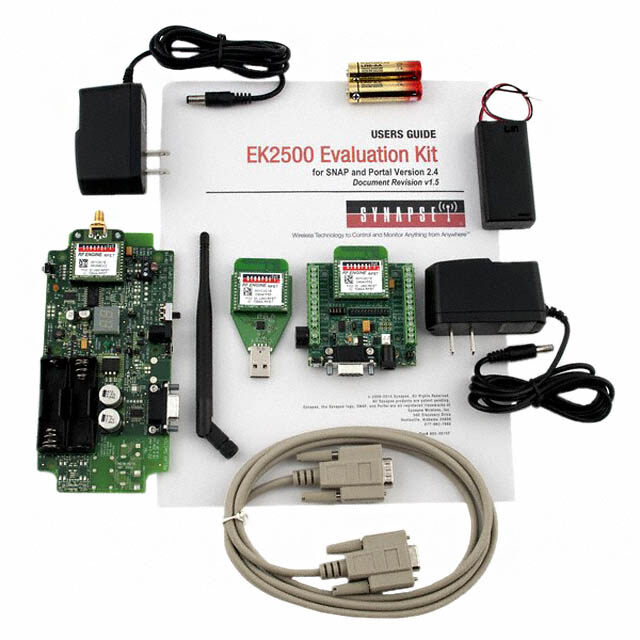

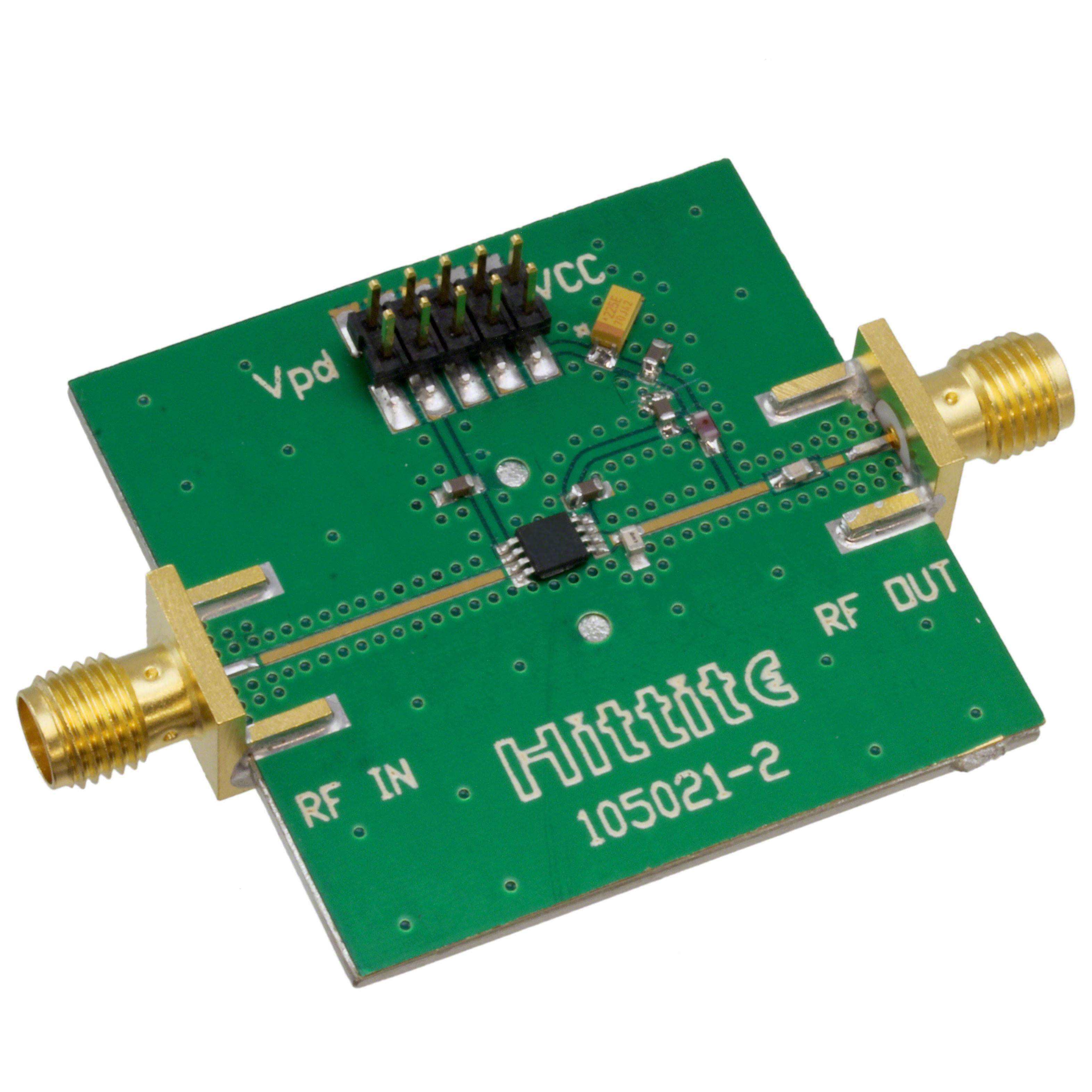
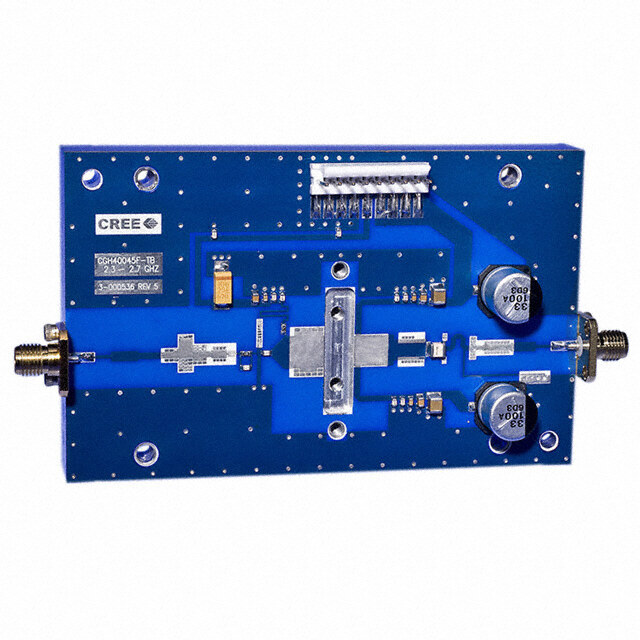
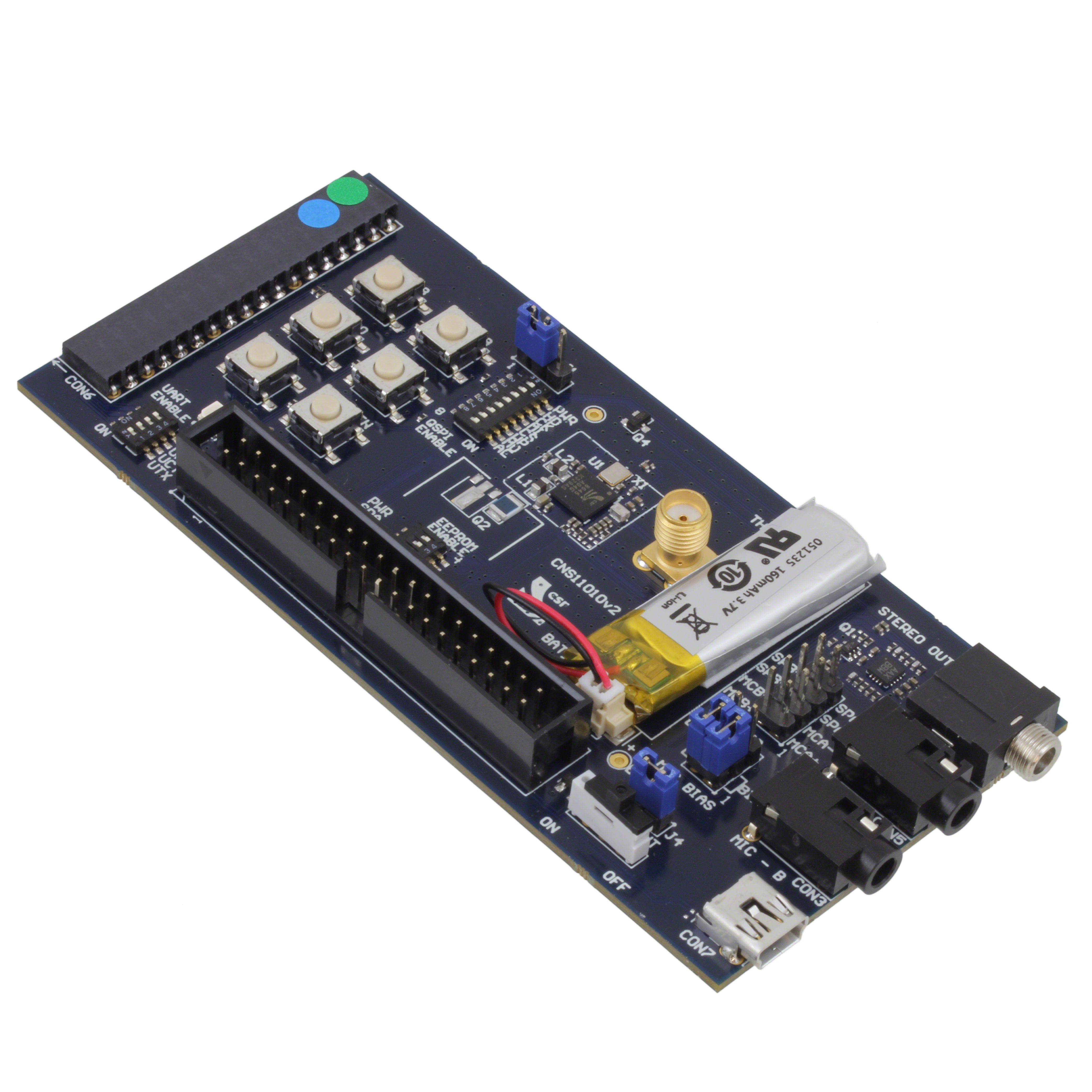
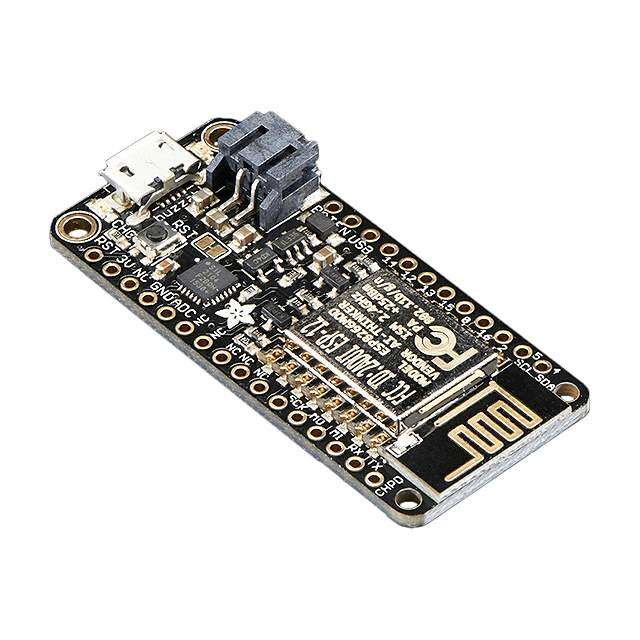
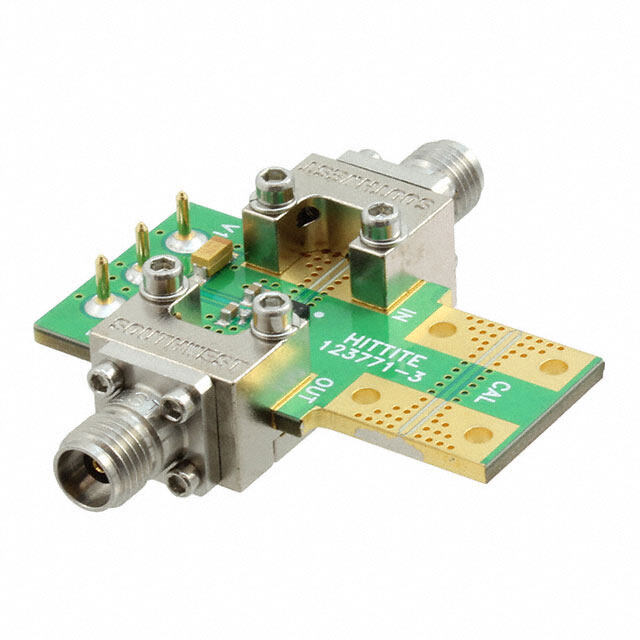
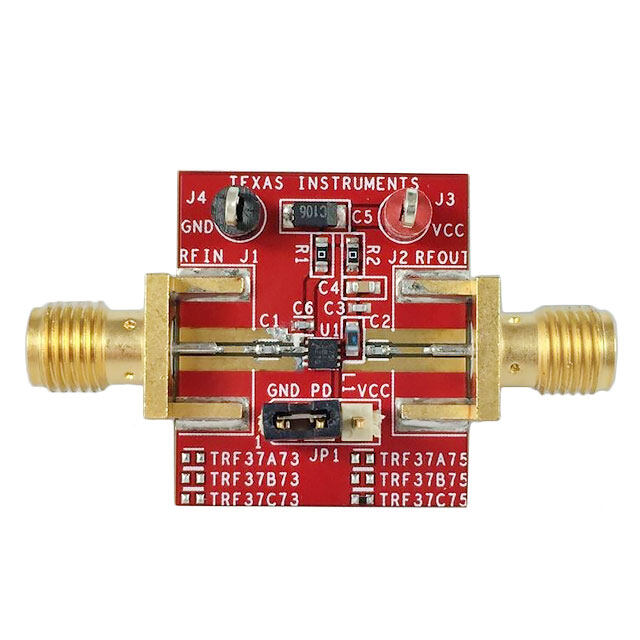

- 商务部:美国ITC正式对集成电路等产品启动337调查
- 曝三星4nm工艺存在良率问题 高通将骁龙8 Gen1或转产台积电
- 太阳诱电将投资9.5亿元在常州建新厂生产MLCC 预计2023年完工
- 英特尔发布欧洲新工厂建设计划 深化IDM 2.0 战略
- 台积电先进制程称霸业界 有大客户加持明年业绩稳了
- 达到5530亿美元!SIA预计今年全球半导体销售额将创下新高
- 英特尔拟将自动驾驶子公司Mobileye上市 估值或超500亿美元
- 三星加码芯片和SET,合并消费电子和移动部门,撤换高东真等 CEO
- 三星电子宣布重大人事变动 还合并消费电子和移动部门
- 海关总署:前11个月进口集成电路产品价值2.52万亿元 增长14.8%
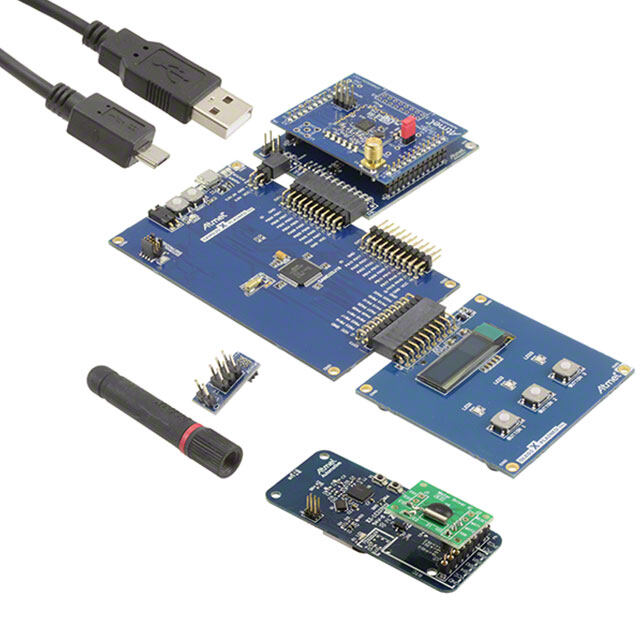
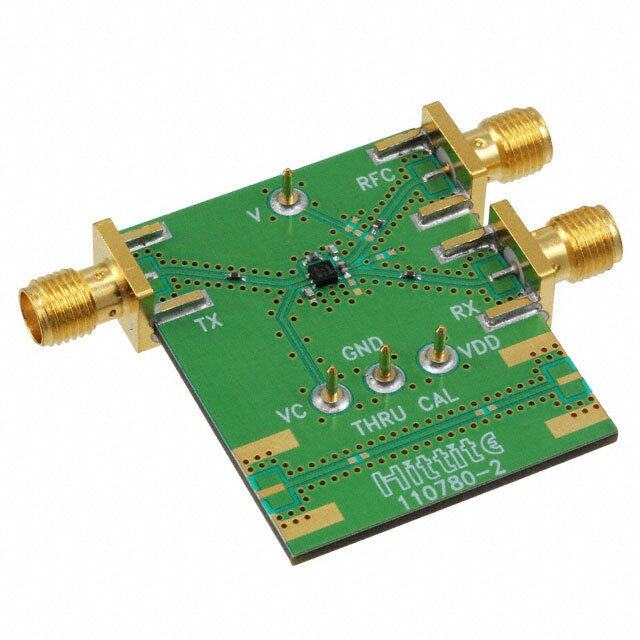
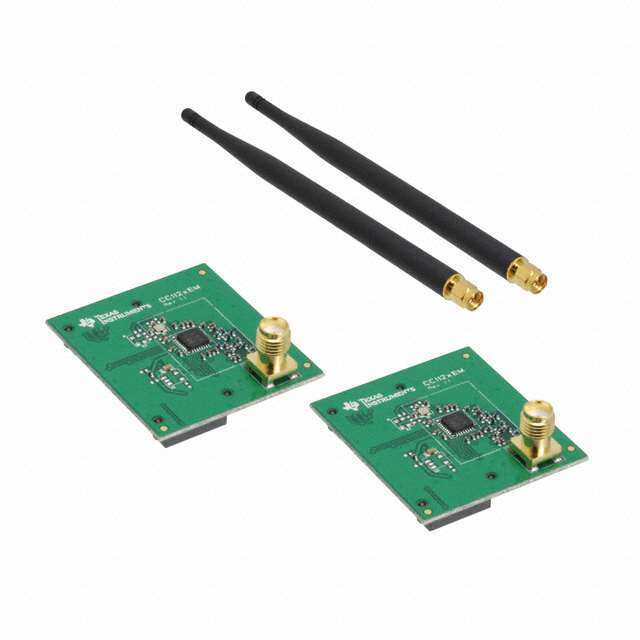
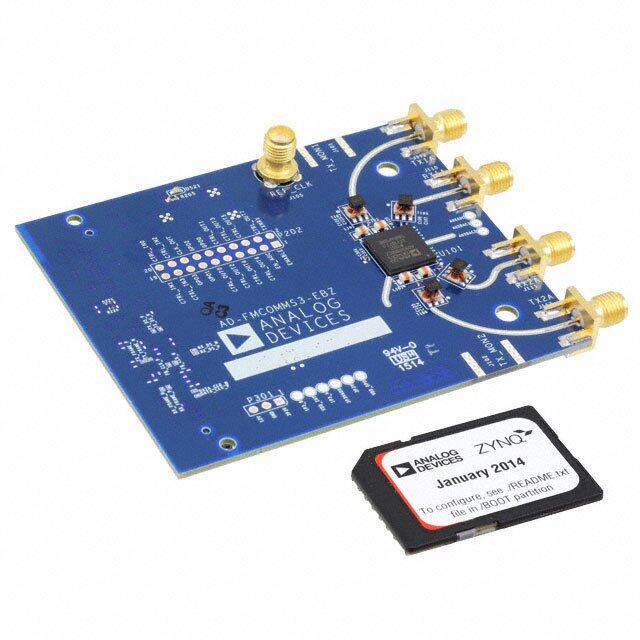
PDF Datasheet 数据手册内容提取
Wi-Fi Comm Demo Board User’s Guide © 2012 Microchip Technology Inc. DS70678A
Note the following details of the code protection feature on Microchip devices: • Microchip products meet the specification contained in their particular Microchip Data Sheet. • Microchip believes that its family of products is one of the most secure families of its kind on the market today, when used in the intended manner and under normal conditions. • There are dishonest and possibly illegal methods used to breach the code protection feature. All of these methods, to our knowledge, require using the Microchip products in a manner outside the operating specifications contained in Microchip’s Data Sheets. Most likely, the person doing so is engaged in theft of intellectual property. • Microchip is willing to work with the customer who is concerned about the integrity of their code. • Neither Microchip nor any other semiconductor manufacturer can guarantee the security of their code. Code protection does not mean that we are guaranteeing the product as “unbreakable.” Code protection is constantly evolving. We at Microchip are committed to continuously improving the code protection features of our products. Attempts to break Microchip’s code protection feature may be a violation of the Digital Millennium Copyright Act. If such acts allow unauthorized access to your software or other copyrighted work, you may have a right to sue for relief under that Act. Information contained in this publication regarding device Trademarks applications and the like is provided only for your convenience The Microchip name and logo, the Microchip logo, dsPIC, and may be superseded by updates. It is your responsibility to KEELOQ, KEELOQ logo, MPLAB, PIC, PICmicro, PICSTART, ensure that your application meets with your specifications. PIC32 logo, rfPIC and UNI/O are registered trademarks of MICROCHIP MAKES NO REPRESENTATIONS OR Microchip Technology Incorporated in the U.S.A. and other WARRANTIES OF ANY KIND WHETHER EXPRESS OR countries. IMPLIED, WRITTEN OR ORAL, STATUTORY OR OTHERWISE, RELATED TO THE INFORMATION, FilterLab, Hampshire, HI-TECH C, Linear Active Thermistor, INCLUDING BUT NOT LIMITED TO ITS CONDITION, MXDEV, MXLAB, SEEVAL and The Embedded Control QUALITY, PERFORMANCE, MERCHANTABILITY OR Solutions Company are registered trademarks of Microchip FITNESS FOR PURPOSE. Microchip disclaims all liability Technology Incorporated in the U.S.A. arising from this information and its use. Use of Microchip Analog-for-the-Digital Age, Application Maestro, chipKIT, devices in life support and/or safety applications is entirely at chipKIT logo, CodeGuard, dsPICDEM, dsPICDEM.net, the buyer’s risk, and the buyer agrees to defend, indemnify and dsPICworks, dsSPEAK, ECAN, ECONOMONITOR, hold harmless Microchip from any and all damages, claims, FanSense, HI-TIDE, In-Circuit Serial Programming, ICSP, suits, or expenses resulting from such use. No licenses are Mindi, MiWi, MPASM, MPLAB Certified logo, MPLIB, conveyed, implicitly or otherwise, under any Microchip MPLINK, mTouch, Omniscient Code Generation, PICC, intellectual property rights. PICC-18, PICDEM, PICDEM.net, PICkit, PICtail, REAL ICE, rfLAB, Select Mode, Total Endurance, TSHARC, UniWinDriver, WiperLock and ZENA are trademarks of Microchip Technology Incorporated in the U.S.A. and other countries. SQTP is a service mark of Microchip Technology Incorporated in the U.S.A. All other trademarks mentioned herein are property of their respective companies. © 2012, Microchip Technology Incorporated, Printed in the U.S.A., All Rights Reserved. Printed on recycled paper. ISBN: 978-1-62076-128-1 QUALITY MANAGEMENT SYSTEM Microchip received ISO/TS-16949:2009 certification for its worldwide CERTIFIED BY DNV headquarters, design and wafer fabrication facilities in Chandler and Tempe, Arizona; Gresham, Oregon and design centers in California and India. The Company’s quality system processes and procedures == ISO/TS 16949 == are for its PIC® MCUs and dsPIC® DSCs, KEELOQ® code hopping devices, Serial EEPROMs, microperipherals, nonvolatile memory and analog products. In addition, Microchip’s quality system for the design and manufacture of development systems is ISO 9001:2000 certified. DS70678A-page 2 © 2012 Microchip Technology Inc.
Wi-Fi COMM DEMO BOARD USER’S GUIDE Table of Contents Preface ...........................................................................................................................5 Chapter 1. Overview 1.1 Kit Contents ....................................................................................................9 1.2 Functionality and Features .............................................................................9 Chapter 2. Hardware 2.1 Hardware Features .......................................................................................11 Chapter 3. Getting Started 3.1 Overview ......................................................................................................13 3.2 Running the Wi-Fi Comm Demo Application ..................................................13 3.3 Ad hoc Networks ..........................................................................................16 3.4 Zero Configuration/Bonjour ..........................................................................16 3.5 Configured vs. Unconfigured State ..............................................................17 Appendix A. Wi-Fi Comm Demo Board Schematic A.1 Introduction ..................................................................................................19 Worldwide Sales and Service ....................................................................................22 © 2012 Microchip Technology Inc. DS70678A-page 3
Wi-Fi Comm Demo Board User’s Guide NOTES: DS70678A-page 4 © 2012 Microchip Technology Inc.
Wi-Fi COMM DEMO BOARD USER’S GUIDE Preface NOTICE TO CUSTOMERS All documentation becomes dated, and this manual is no exception. Microchip tools and documentation are constantly evolving to meet customer needs, so some actual dialogs and/or tool descriptions may differ from those in this document. Please refer to our web site (www.microchip.com) to obtain the latest documentation available. Documents are identified with a “DS” number. This number is located on the bottom of each page, in front of the page number. The numbering convention for the DS number is “DSXXXXXA”, where “XXXXX” is the document number and “A” is the revision level of the document. For the most up-to-date information on development tools, see the MPLAB® IDE on-line help. Select the Help menu, and then Topics to open a list of available on-line help files. INTRODUCTION This chapter contains general information that will be useful to know before using the Wi-Fi Comm Demo Board. Items discussed in this chapter include: • Document Layout • Conventions Used in this Guide • Warranty Registration • Recommended Reading • The Microchip Web Site • Development Systems Customer Change Notification Service • Customer Support • Document Revision History DOCUMENT LAYOUT This document describes how to use the Wi-Fi Comm Demo Board to create a Wi-Fi network and control the demo board functions from the client device web browser. The manual layout is as follows: • Chapter 1.“Overview” – This chapter provides a brief overview of the demo board, highlighting its features and uses. • Chapter 2.“Hardware” – This chapter provides the hardware description of the Wi-Fi Comm Demo Board. • Chapter 3.“Getting Started” – This chapter describes what you need to know to start using the Wi-Fi Comm Demo Board. • Appendix A.“Wi-Fi Comm Demo Board Schematic” – This appendix includes Wi-Fi Comm Demo Board schematic. © 2012 Microchip Technology Inc. DS70678A-page 5
Wi-Fi Comm Demo Board User’s Guide CONVENTIONS USED IN THIS GUIDE This manual uses the following documentation conventions: DOCUMENTATION CONVENTIONS Description Represents Examples Arial font: Italic characters Referenced books MPLAB® IDE User’s Guide Emphasized text ...is the only compiler... Initial caps A window the Output window A dialog the Settings dialog A menu selection select Enable Programmer Quotes A field name in a window or “Save project before build” dialog Underlined, italic text with A menu path File>Save right angle bracket Bold characters A dialog button Click OK A tab Click the Power tab N‘Rnnnn A number in verilog format, 4‘b0010, 2‘hF1 where N is the total number of digits, R is the radix and n is a digit. Text in angle brackets < > A key on the keyboard Press <Enter>, <F1> Courier New font: Plain Courier New Sample source code #define START Filenames autoexec.bat File paths c:\mcc18\h Keywords _asm, _endasm, static Command-line options -Opa+, -Opa- Bit values 0, 1 Constants 0xFF, ‘A’ Italic Courier New A variable argument file.o, where file can be any valid filename Square brackets [ ] Optional arguments mcc18 [options] file [options] Curly brackets and pipe Choice of mutually exclusive errorlevel {0|1} character: { | } arguments; an OR selection Ellipses... Replaces repeated text var_name [, var_name...] Represents code supplied by void main (void) user { ... } DS70678A-page 6 © 2012 Microchip Technology Inc.
Preface WARRANTY REGISTRATION Please complete the enclosed Warranty Registration Card and mail it promptly. Sending in the Warranty Registration Card entitles users to receive new product updates. Interim software releases are available at the Microchip web site. RECOMMENDED READING This user’s guide describes how to use the Wi-Fi Comm Demo Board. The following Microchip documents are available from the Microchip web site (www.micro- chip.com), and are recommended as supplemental reference resources. MRF24WB0MA/MRF24WB0MB Data Sheet (DS70632) PIC32MX5XX/6XX/7XX Family Data Sheet (DS61156) THE MICROCHIP WEB SITE Microchip provides online support via our web site at www.microchip.com. This web site is used as a means to make files and information easily available to customers. Accessible by using your favorite Internet browser, the web site contains the following information: • Product Support – Data sheets and errata, application notes and sample programs, design resources, user’s guides and hardware support documents, latest software releases and archived software • General Technical Support – Frequently Asked Questions (FAQs), technical support requests, online discussion groups, Microchip consultant program member listing • Business of Microchip – Product selector and ordering guides, latest Microchip press releases, listing of seminars and events, listings of Microchip sales offices, distributors and factory representatives © 2012 Microchip Technology Inc. DS70678A-page 7
Wi-Fi Comm Demo Board User’s Guide DEVELOPMENT SYSTEMS CUSTOMER CHANGE NOTIFICATION SERVICE Microchip’s customer notification service helps keep customers current on Microchip products. Subscribers will receive e-mail notification whenever there are changes, updates, revisions or errata related to a specified product family or development tool of interest. To register, access the Microchip web site at www.microchip.com, click on Customer Change Notification and follow the registration instructions. The Development Systems product group categories are: • Compilers – The latest information on Microchip C compilers and other language tools. These include the MPLAB® C18 and MPLAB C30 C compilers; MPASM™ and MPLAB ASM30 assemblers; MPLINK™ and MPLAB LINK30 object linkers; and MPLIB™ and MPLAB LIB30 object librarians. • Emulators – The latest information on Microchip in-circuit emulators.This includes the MPLAB ICE 2000 and MPLAB ICE 4000. • In-Circuit Debuggers – The latest information on the Microchip in-circuit debugger, MPLAB ICD 2. • MPLAB® IDE – The latest information on Microchip MPLAB IDE, the Windows® Integrated Development Environment for development systems tools. This list is focused on the MPLAB IDE, MPLAB SIM simulator, MPLAB IDE Project Manager and general editing and debugging features. • Programmers – The latest information on Microchip programmers. These include the MPLAB PM3 and PRO MATE® II device programmers and the PICSTART® Plus and PICkit™ 1 development programmers. CUSTOMER SUPPORT Users of Microchip products can receive assistance through several channels: • Distributor or Representative • Local Sales Office • Field Application Engineer (FAE) • Technical Support Customers should contact their distributor, representative or field application engineer (FAE) for support. Local sales offices are also available to help customers. A listing of sales offices and locations is included in the back of this document. Technical support is available through the web site at: http://support.microchip.com DOCUMENT REVISION HISTORY Revision A (March 2012) This is the initial release of the document. DS70678A-page 8 © 2012 Microchip Technology Inc.
Wi-Fi COMM DEMO BOARD USER’S GUIDE Chapter 1. Overview 1.1 INTRODUCTION Thank you for purchasing the Microchip Technology’s Wi-Fi Comm Demonstration kit. The Wi-Fi Comm Demo Board provides a low-cost and portable development system for Microchip’s MRF24WB0MA 802.11b RF Transceiver module. The Wi-Fi Comm Demo Board is preloaded with the demo software for the user to explore the features of the MRF24WB0MA Wi-Fi module. It is also expandable through an expansion interface, which allows the user to extend its functionality by adding various sensor expansion boards. The topics discussed in this chapter include: • Wi-Fi Comm Demostration kit Contents • Functionality and Features 1.2 Wi-Fi COMM DEMOSTRATION KIT CONTENTS The Wi-Fi Comm Demonstration Kit contains these items: • Wi-Fi Comm Demo Board • 2 AAA Lithium Batteries • Wi-Fi Comm Demo Board Information Sheet 1.3 FUNCTIONALITY AND FEATURES A representation of the layout for the Wi-Fi Comm Demo Board is as shown in Figure1-1. © 2012 Microchip Technology Inc. DS70678A-page 9
Wi-Fi Comm Demo Board User’s Guide FIGURE 1-1: Wi-Fi COMM DEMO BOARD LAYOUT The Wi-Fi Comm Demo Board includes the following key features: 1. MRF24WMB0MA RF Transceiver module 2. PIC32MX695F512H 32-bit microcontroller 3. MCP1642 +3.3V Boost regulator 4. Three status indicator LEDs 5. One push-button switch for user input 6. Power ON/OFF slider switch 7. 6-pin debug port 8. 8-pin sensor port DS70678A-page 10 © 2012 Microchip Technology Inc.
Wi-Fi COMM DEMO BOARD USER’S GUIDE Chapter 2. Hardware This chapter describes the hardware features of the Wi-Fi Comm Demo Board. 2.1 HARDWARE FEATURES The key features of the Wi-Fi Comm Demo Board are listed below and they are intro- duced in the Section1.3“Functionality and Features”, see Figure1-1 for their locations on the board. 2.1.1 Wi-Fi Transceiver The MRF24WMB0MA RF Transceiver module provides wireless connectivity to the demo board. Host communication is through SPI2 of the PIC processor on the board. 2.1.2 Processor Support The Wi-Fi Comm Demo Board is designed with a permanently mounted (soldered) PIC32MX695F512H processor. 2.1.3 Power Supply The board is powered through 2 AAA Lithium batteries. If required, the battery voltage is monitored and boosted by the MCP1642 Synchronous Boost Regulator. 2.1.4 LEDs The LED’s: LED0, LED1 and LED2 are connected to PORTE and PORTF of the PIC32MX695F512H processor. To ON the LED’s, the port pins are set high. 2.1.5 Switches The Wi-Fi Comm Demo Board contains the following switches: • S1 – Controls the main power to the board. To turn on the board, move S1 slider to the ON position. • SW0 – Push-button switch, it is an active low switch connected to RD9 of the pro- cessor. When Idle, switch is pulled high (+3.3V) and when pressed, it is grounded. 2.1.6 Debug Port Connector J14 provides easy access to the PIC32MX695F512H processors debug pins. 2.1.7 Sensor Expansion Port Connector J15 provides access to some of the processors spare I/O pins. These pins can function as an SPI, UART, or I2C port to an attached sensor board or as general purpose I/O. © 2012 Microchip Technology Inc. DS70678A-page 11
Wi-Fi Comm Demo Board User’s Guide NOTES: DS70678A-page 12 © 2012 Microchip Technology Inc.
Wi-Fi COMM DEMO BOARD USER’S GUIDE Chapter 3. Getting Started 3.1 OVERVIEW Wireless Local Area Networks (WLAN) provide a unique challenge for configuring embedded wireless products without a natural user interface. Unlike wired networks, wireless networks require unique items such as the Service Set Identifier (SSID), network type and security keys, and these items must be sent to the device in some form or another. Generally, the user would enter this information using a keyboard and display. The Wi-Fi Comm demo application uses a mechanism called EasyConfig to allow for con- figuration of an embedded device on a wireless network. It utilizes the web server of the TCP/IP stack and a wireless ad hoc (independent basic service set) network to allow the user to input the desired network information from a client browser, and then reset the device to connect to the desired network. 3.2 RUNNING THE WI-FI COMM DEMO APPLICATION This section describes how to connect to the Wi-Fi Comm Demo Board to control the on board LED's and view the status of the SW0 switch from a web browser. It also describes how to connect the Wi-Fi Comm Demo board to an existing network. 1. After powering, the Wi-Fi Comm Demo Board broadcasts an ad hoc network with an SSID, MCHP_xxxx. Where, xxxx is the last four digits of the MRF24WMB0MA RF Transceiver module’s MAC address (See Example3-1). EXAMPLE 3-1: MRF24WMB0MA MAC (SN): 001EC001E627 AD HOC SSID: MCHP_E627 2. Connect a client device, such as a laptop, iPod® Touch, iPhone®, iPad®, to the MCHP_xxxx ad hoc network. 3. After connecting the client device, use a standard web browser and enter the IP address of the Wi-Fi Comm Demo Board. The default IP address is http://169.254.1.1. 4. The following web pages from the web server that is running on the Wi-Fi Comm Demo Board will be displayed. a) The index.htm web page displays the additional information about the Wi-Fi Comm Demo Board application. It also displays the continually updating status of the three LEDs (LED0, LED1 and LED2) and push-button on the Wi-Fi Comm Demo Board, see figure Figure3-1. To control the LED's, click on the LED icon on the Web page. To see the status of the push-button, press SW0 on the Wi-Fi Comm Demo Board. © 2012 Microchip Technology Inc. DS70678A-page 13
Wi-Fi Comm Demo Board User’s Guide FIGURE 3-1: SAMPLE INDEX.HTM WEB PAGE b) The configure.htm web page allows the user to scan for nearby networks and connect to the selected network, see Figure3-2. FIGURE 3-2: SAMPLE CONFIGURE.HTM WEB PAGE 5. To connect the Wi-Fi Comm Demo board to an existing network: Click Scan for Wireless Networks on the configure.htm web page. 6. When a new network is selected, the Wi-Fi Comm Demo Board will reset automatically using the parameters (SSID, security key) of the new network. 7. To continue using the demo, the client device must be reconnected to the same network where Wi-Fi Comm Demo Board is on. DS70678A-page 14 © 2012 Microchip Technology Inc.
Getting Started Note: The demo board will always attempt to connect to the last known network. If the user wants to reset the demo to startup in ad hoc mode again, then simply slide the power switch S1 to the OFF position and then back to the ON position. 3.3 AD HOC NETWORKS On starting the demo, the product will either connect to another ad hoc network or will start its own if ad hoc network is not found. Ad hoc networks are peer-to-peer networks with no centralized coordinator for the network; all the devices share the responsibilities of keeping the network running. One downfall of ad hoc networks is that typically security is not employed on them. The MRF24WB0M module can secure an ad hoc network with Wired Equivalent Privacy (WEP) (40-bit/104-bit) security, like most of the laptops and ad hoc devices. Very few devices in the market can secure an ad hoc network with Wi-Fi Protected Access (WPA) level security due to tremendous overhead. The demo starts on an ad hoc network without security. This means that all the network information that is being configured on the device is going over-the-air in the open. For most applications, unless somebody is specifically attempting to listen in on this network, there should be minor impact on security. However, for applications that require baseline level of security, WEP can be employed on the network. 3.4 ZERO CONFIGURATION/BONJOUR Zero Configuration (Zeroconf) provides a mechanism to simplify the device configuration on a network. The term Zeroconf is titled from the names Bonjour (Apple) and Avahi (Linux), and is an Internet Engineering Task Force (IETF) standard. Zeroconf provides simplified naming conventions, instead of relying on the IP addresses alone. The Zeroconf is built on the following three core technologies. 3.4.1 Link Local The first component of Zeroconf is the ability to self-assign an IP address to each member of a network. Usually, a Dynamic Host Configuration Protocol (DHCP) server handles such situations. However, when no DHCP server exists, Zeroconf enabled devices negotiate the unique IP address amongst themselves. 3.4.2 Multicast DNS The second component of Zeroconf is the ability to self-assign the host names. Multicast Domain Name System (DNS) provides the local network with the ability to have the features of a DNS server. User can use the host names to access the devices on the network. When devices select to use the same host name, as in the IP address resolution, each of the devices will self-assign the Auto-negotiate New Names, usually appending a number at the end of the name. 3.4.3 Service Discovery The last component of Zeroconf is service discovery. All Zeroconf devices can broadcast what services they provide. For instance, a printer can broadcast about available printing services. A thermostat can broadcast that it has an HVAC control service. For a specific service, the user can see the list of devices that provide the service, and connect to it. This eliminates the need to know whether something exists on a network (and what it's IP or host name is). The user can query the network to see if a certain service exists or not, and easily connect to it. © 2012 Microchip Technology Inc. DS70678A-page 15
Wi-Fi Comm Demo Board User’s Guide 3.5 CONFIGURED VS. UNCONFIGURED STATE When the Wi-Fi Comm demo is in an unconfigured state (i.e, serving the default MCHP_xxxx SSID in ad hoc mode), the LED (LED0) will blink twice per second to indi- cate it is not configured. After the network is configured, the LED will blink once per second. Note: When the Wi-Fi Comm Demo Board is moved to a different network, a new IP address will be assigned to it. As the Wi-Fi Comm Demo Board does not display the new IP address, the user must obtain the new IP address from the server that assigned it. Refer to your server’s documentation for the necessary steps required to obtain the new IP address. DS70678A-page 16 © 2012 Microchip Technology Inc.
Wi-Fi COMM DEMO BOARD USER’S GUIDE Appendix A. Wi-Fi Comm Demo Board Schematic A.1 INTRODUCTION This appendix provides the Wi-Fi Comm Demo Board schematic. © 2012 Microchip Technology Inc. DS70678A-page 17
D FIGURE A-1: Wi-Fi COMM DEMO BOARD SCHEMATIC W S 7 067 i- 8 F A -pa i g C e 1 o 8 m m D e m o B o a r d U s e r ’ s G u i d e © 2 0 1 2 M ic ro c h ip T e c h n o lo g y In c .
Wi-Fi Comm Demo Board Schematic NOTES: © 2012 Microchip Technology Inc. DS70678A-page 19
Worldwide Sales and Service AMERICAS ASIA/PACIFIC ASIA/PACIFIC EUROPE Corporate Office Asia Pacific Office India - Bangalore Austria - Wels 2355 West Chandler Blvd. Suites 3707-14, 37th Floor Tel: 91-80-3090-4444 Tel: 43-7242-2244-39 Chandler, AZ 85224-6199 Tower 6, The Gateway Fax: 91-80-3090-4123 Fax: 43-7242-2244-393 Tel: 480-792-7200 Harbour City, Kowloon India - New Delhi Denmark - Copenhagen Fax: 480-792-7277 Hong Kong Tel: 91-11-4160-8631 Tel: 45-4450-2828 Technical Support: Tel: 852-2401-1200 Fax: 91-11-4160-8632 Fax: 45-4485-2829 http://www.microchip.com/ support Fax: 852-2401-3431 India - Pune France - Paris Web Address: Australia - Sydney Tel: 91-20-2566-1512 Tel: 33-1-69-53-63-20 Tel: 61-2-9868-6733 Fax: 33-1-69-30-90-79 www.microchip.com Fax: 91-20-2566-1513 Fax: 61-2-9868-6755 Germany - Munich Atlanta Japan - Osaka Duluth, GA China - Beijing Tel: 81-66-152-7160 Tel: 49-89-627-144-0 Tel: 86-10-8569-7000 Fax: 49-89-627-144-44 Tel: 678-957-9614 Fax: 81-66-152-9310 Fax: 678-957-1455 Fax: 86-10-8528-2104 Japan - Yokohama Italy - Milan China - Chengdu Tel: 39-0331-742611 Boston Tel: 81-45-471- 6166 Tel: 86-28-8665-5511 Fax: 39-0331-466781 Westborough, MA Fax: 81-45-471-6122 Tel: 774-760-0087 Fax: 86-28-8665-7889 Netherlands - Drunen Korea - Daegu Fax: 774-760-0088 China - Chongqing Tel: 82-53-744-4301 Tel: 31-416-690399 Tel: 86-23-8980-9588 Fax: 31-416-690340 Chicago Fax: 82-53-744-4302 Itasca, IL Fax: 86-23-8980-9500 Spain - Madrid Korea - Seoul Tel: 630-285-0071 China - Hangzhou Tel: 82-2-554-7200 Tel: 34-91-708-08-90 Fax: 630-285-0075 Tel: 86-571-2819-3187 Fax: 82-2-558-5932 or Fax: 34-91-708-08-91 Cleveland Fax: 86-571-2819-3189 82-2-558-5934 UK - Wokingham Independence, OH China - Hong Kong SAR Malaysia - Kuala Lumpur Tel: 44-118-921-5869 Tel: 216-447-0464 Tel: 852-2401-1200 Tel: 60-3-6201-9857 Fax: 44-118-921-5820 Fax: 216-447-0643 Fax: 852-2401-3431 Fax: 60-3-6201-9859 Dallas China - Nanjing Malaysia - Penang Addison, TX Tel: 86-25-8473-2460 Tel: 60-4-227-8870 Tel: 972-818-7423 Fax: 86-25-8473-2470 Fax: 60-4-227-4068 Fax: 972-818-2924 China - Qingdao Philippines - Manila Detroit Tel: 86-532-8502-7355 Tel: 63-2-634-9065 Farmington Hills, MI Fax: 86-532-8502-7205 Fax: 63-2-634-9069 Tel: 248-538-2250 Fax: 248-538-2260 China - Shanghai Singapore Tel: 86-21-5407-5533 Tel: 65-6334-8870 Indianapolis Fax: 86-21-5407-5066 Fax: 65-6334-8850 Noblesville, IN Tel: 317-773-8323 China - Shenyang Taiwan - Hsin Chu Fax: 317-773-5453 Tel: 86-24-2334-2829 Tel: 886-3-5778-366 Fax: 86-24-2334-2393 Fax: 886-3-5770-955 Los Angeles Mission Viejo, CA China - Shenzhen Taiwan - Kaohsiung Tel: 949-462-9523 Tel: 86-755-8203-2660 Tel: 886-7-536-4818 Fax: 949-462-9608 Fax: 86-755-8203-1760 Fax: 886-7-330-9305 Santa Clara China - Wuhan Taiwan - Taipei Santa Clara, CA Tel: 86-27-5980-5300 Tel: 886-2-2500-6610 Tel: 408-961-6444 Fax: 86-27-5980-5118 Fax: 886-2-2508-0102 Fax: 408-961-6445 China - Xian Thailand - Bangkok Toronto Tel: 86-29-8833-7252 Tel: 66-2-694-1351 Mississauga, Ontario, Fax: 86-29-8833-7256 Fax: 66-2-694-1350 Canada China - Xiamen Tel: 905-673-0699 Tel: 86-592-2388138 Fax: 905-673-6509 Fax: 86-592-2388130 China - Zhuhai Tel: 86-756-3210040 11/29/11 Fax: 86-756-3210049 DS70678A-page 20 © 2011 Microchip Technology Inc.
Mouser Electronics Authorized Distributor Click to View Pricing, Inventory, Delivery & Lifecycle Information: M icrochip: DV102411

 Datasheet下载
Datasheet下载
